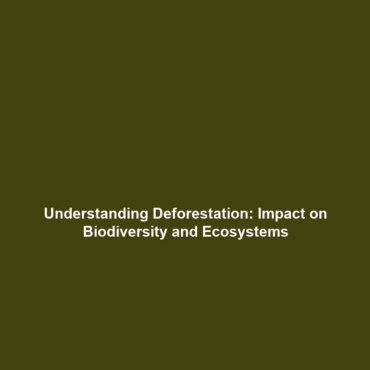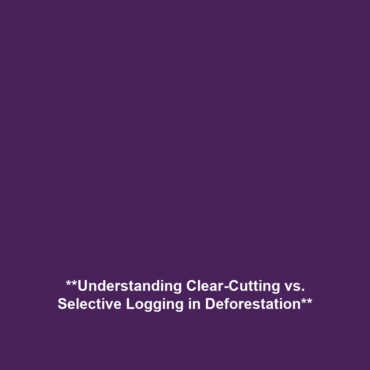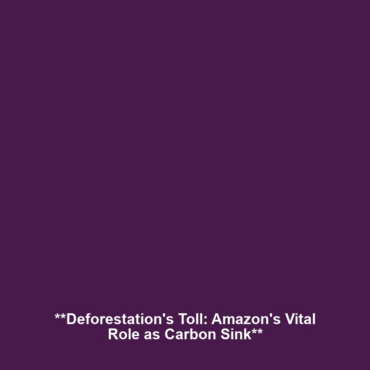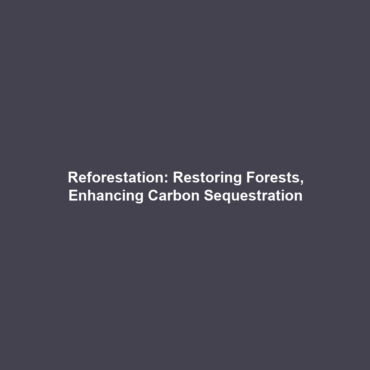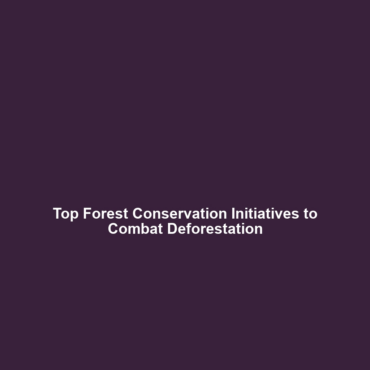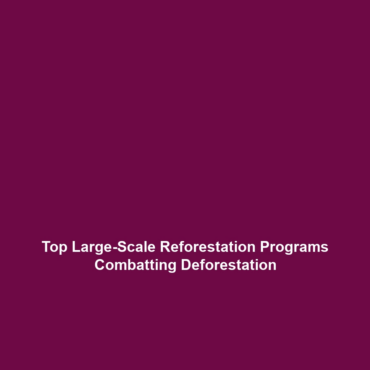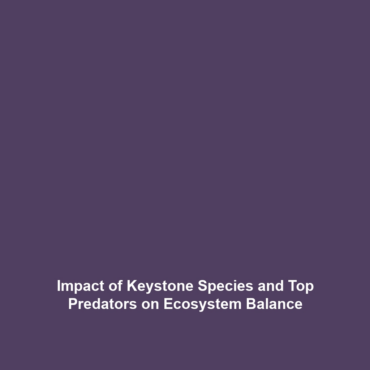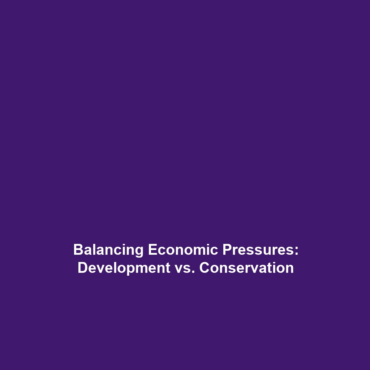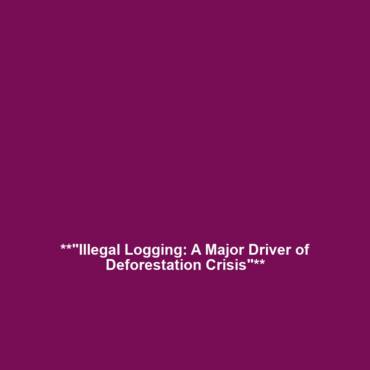What is Deforestation? Overview of the Clearing of Forested Areas
Deforestation refers to the process of clearing forested areas, resulting in damage to global biospheres and biodiversity. This process is critical to understanding the impacts of human activity on the environment, particularly regarding biodiversity loss. As forests serve as habitats for countless species, their destruction poses severe risks to ecological balance. In this article, we will explore the meaning and implications of deforestation, its applications, current challenges, and future research in the context of biodiversity loss.
Key Concepts
To fully grasp what deforestation entails, it’s essential to consider several key concepts:
1. Definition of Deforestation
Deforestation is primarily driven by agricultural expansion, urban development, logging, and infrastructure projects. This clearing of land not only impacts tree cover but also disrupts natural habitats.
2. Deforestation Rates
Global deforestation rates have been alarming, with millions of hectares lost each year. Understanding these statistics helps contextualize the impact of deforestation within the broader category of biodiversity loss.
3. Biodiversity and Ecosystems
Forests are vital for maintaining biodiversity. They house approximately 80% of terrestrial species. Deforestation dramatically reduces the number of species that can survive in these ecosystems, leading to extinction.
Applications and Real-World Uses
Understanding what deforestation is allows us to explore its significant applications:
- Land Use Planning: Knowledge of deforestation helps governments and organizations develop sustainable land use policies.
- Conservation Efforts: Understanding the implications of deforestation drives efforts to protect remaining forests and restore damaged ecosystems.
- Education and Awareness: Raising awareness about the consequences of deforestation is crucial for promoting environmental stewardship.
Current Challenges
Despite the critical importance of addressing deforestation, several challenges hinder progress:
- Economic Pressures: Many developing countries rely on logging and agriculture, creating a conflict between economic growth and environmental preservation.
- Lack of Enforcement: Regulations against deforestation are often poorly enforced, allowing illegal logging to continue unchecked.
- Awareness and Education: A lack of awareness among the public and policymakers about the impacts of deforestation inhibits effective action.
Future Research and Innovations
The future of addressing deforestation lies in innovative research and techniques:
- Remote Sensing Technology: Innovations in satellite imaging are enhancing our ability to monitor deforestation in real-time.
- Reforestation Programs: New genetic research aims to develop more resilient tree species for restoration projects.
- Sustainable Practices: Research into sustainable agricultural practices is critical for reducing the need to clear forests for farmland.
Conclusion
Deforestation is a pressing environmental issue that directly contributes to biodiversity loss. Understanding its implications is vital for developing effective strategies to combat this crisis. By addressing the challenges that come with deforestation and supporting expert-led innovations, we can take meaningful steps toward ensuring a sustainable future for our planet’s forests. To learn more, explore additional resources on biodiversity conservation and sustainable forestry practices.
For further reading, visit our articles on biodiversity conservation and sustainable forestry practices.
